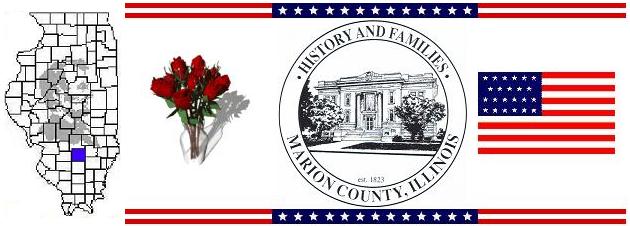
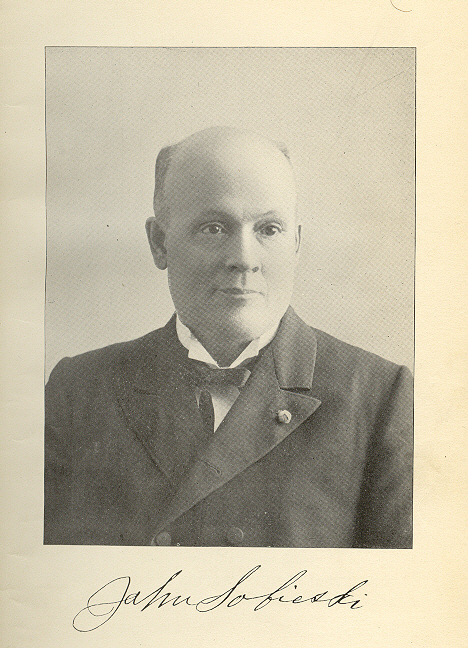
Colonel John Sobieski
Prince Royal of Poland
Soldier
&
 American Patriot
American Patriot


 Beginnings In Poland
Beginnings In Poland

Colonel John Sobieski was born the 10th of September 1842, Warsaw, Poland, the son of Count John Sobieski, son of James Sobieski who lost his life in the Revolution in Poland of 1830-31. James was a lineal descendant of King John Sobieski, know as King John III. Colonel Sobieski was sixth in the direct line of King John III. Colonel John's mother was Isabella (Bem) Sobieski, of the celebrated Bem family, so noted for their patriotism. Isabella's oldest half-brother served under Napoleon during the struggles for liberty in Europe from 1815 until his death in 1853.
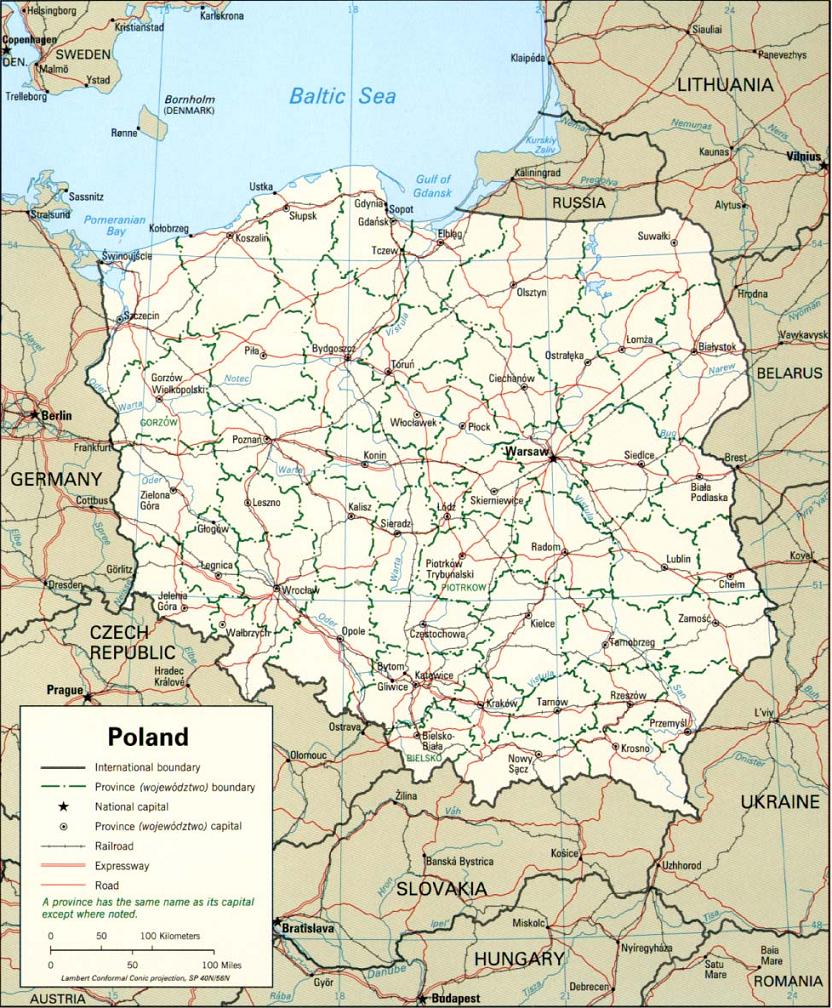
Colonel John's father was a graduate of the University of Heidelberg in 1840. He was a Colonel in the Polish contingent of the Russian army. He was among those who entered into the insurrection in 1846, trying to free Poland from Russian rule. He participated in several battles until he was wounded and captured and imprisoned. He was in prison for 13 months without a bath or change of clothing. He was executed by the Russian government the 10th of March, 1848. His sister was sentenced to Siberia for 20 years of hard labor and was never heard from again.
Colonel John's family lived on the Sobieski Estate, which was located about 120 miles from Warsaw and consisted of 200,000 acres, being one of the largest estates in Poland.
On the 6th of March, 1848, Countess Sobieski was notified that she must go to Warsaw and meet with the Viceroy of Poland, who was the brother of the Czar. They made the cold trip in two days. On the 9th she met with the Viceroy. He told her that her husband, father and two brothers would be executed the next day. He also told her that if she would allow them to take her son that day and had him over to be raised in the Greek Church and that she would take an oath of fidelity to the Czar, then she could return to her estate unrestrained. She flatly refused. She was then told that all of her estate was immediately taken from her and that she and her son were immediately expelled from Poland forever. He Viceroy begged her to think about it before she made up her mind. She said: "Sire, you can tell the emperor for me, that he can take from us our estate, he can take from us all we possess in the world, banish me and my chld from our native land, home and kindred, to dwell in foreign lands among strangers. I may be compelled to beg bread for myself and boy, but I will go, and I'll teach my boy that he is a Pole, and to love liberty and to despise tyranny, and to revere and cherish the cause which his father cherished and died for, and to hate with undying hatred that nation and sovereign who murdered his father and kin and despoiled his country, and sent us into exile."
A few days after Colonel John's father, grandfather and uncles were executed, he and his mother were placed in a sleigh and under escort of Cossacks were started toward Galicia, which was under control of the Austrians. They were denied entrance. They were then taken to Posen, known as Prussian Poland. They were there a few weeks and then ordered out of the country. They went to the city of Brussels, Belgium. Were there a few weeks then went to Berne, Switzerland. They were there for more than a year. The Countess (Mrs. Sobieski) taught school to young ladies, teaching them languages, music and painting.
The Countess Sobieski's health began to deteriorate so they moved to Milan, Italy, where she had some friends. They were there over a year. While there and incident took place that changed John's life. An American citizen was captured by the Austrian government and placed on one of their ships. This man was originally from Turkey, which was under Austrian control at that time. An American captain, Capt. Ingraham, found out about this and ordered the Austrians to release him. They refused. He told them he would fire upon them if they did not with his the American, even though they had three ships and he only had one. They released him only after Captain Ingraham aimed his guns at their ship. John thought how wonderful a country America must be that they would go to so much trouble to protect one of their citizens who was foreign born.
Archduke Maximilian, the brother of the Emperor of Austria, ordered all political refugees to be expelled from Austrian controlled Italy. The Countess Sobieski and her son John now left for England. While in England they were visited by General Joseph BEM, John's uncle and by Louis KOSSUTH, who had been liberated from a prison in Turkey. Louis told John that he would some day also fight for liberty. His uncle Joseph went to Turkey to help fight the Russians and gain liberty for Turkey and then hopefully later, Poland. He died there in December 1853. It is believed that he was poisoned.
The Countess' health was getting so bad that John had to go live with a Polish gentleman by the name of Zolaski. The Countess Isabella (BEM) SOBIESKI died in September of 1854 at the age of 29. On her death bed she had John pledge to her that he would never drink strong drink, gamble or take the name of God in vain. He remained true to that pledge.
After the death of his mother, John was adopted by the family of Professor KALOSKI. His wife was an English lady and was very kind to John. The Professor actually taught for a time at Annapolis in America after fleeing Poland before he met and married his British wife.
In December of 1854, the United States ship of war, Constellation came into Liverpool. The captain of the ship, John CRAVENS, was a pupil of Professor ZOLASKI and therefore visited him on several occasions while in dock there. A young midshipman by the name of Abbot would also visit the Professor with the captain. He was about three or four years older than John. They became friends. John persuaded him to smuggle him aboard the ship, which he did. He was dressed as a sailor and was taken to sick bay, pretending to be sick, which he often was from sea sickness. Captain CRAVENS did not find out about him until they were entering the harbor of New York.
Arriving in America
Captain CRAVENS was at first very angry, but then got over it and asked John what his plans were. He told him he wanted to be a soldier as were his ancestors. He told him he could blow the bugle as well as anyone. Captain Cravens became John's guardian and John was enlisted into the United States Service on the 26th of April 1855. Captain CRAVENS was lost at sea during the Civil War, off Cape Hatteras, serving the United States.
John went to Carlisle barracks in Pennsylvania. From there he was sent to Jefferson barracks in St. Louis, Missouri. It was there that he met Robert E. Lee, who was a Colonel on the staff of General SCOTT. In 1857, he went to Fort Leavenworth, to help suppress the trouble brewing in Utah with the Mormons. And from there they went to Fort Union in New Mexico because of the trouble with the Apache Indians and later to California and back to New Mexico.
John re-enlisted on the 26th of April, 1860 into the United States Army. His company went to Fort Leavenworth, arriving on the 11th of November. The next day they received the news of the election of Abraham LINCOLN to the presidency of the United States. It had taken more than a week for them to get the news. John's battery had been converted into a fine artillery and was called to the east. They arrived in Brooklyn, New York on the 1st of December, 1860. It was there he experienced his first Thanksgiving, as it was not a nation wide appointed time back then. New York observed it in December.
On the first of March, they arrived in Washington, D.C. John was 19 years of age at this time. John was there for the inauguration of President Abraham LINCOLN. He was not impressed by Lincoln until he heard him speak. He said of LINCOLN, "He appeared so sincere, so true, so honest and sensible, that from that moment I had a faith in him which never wavered."
John's captain, Capt. MAGRUDER, came to him and asked him to go with him and join the southern cause. He told Captain Magruder, "I came to this country an exile, without home or country; the United States had given me both, and I should be forever true to the government of my adoption: wherever the flag went, I should go; and if it went down in defeat and disaster, I would go with it." He visited Captain MAGRUDER one more time after their parting in Washington. It was in 1870 and they talked of old times and MAGRUDER told him that he had made the correction decision. MAGRUDER died a few months after their meeting.
John was injured in during the war. He was taken to a barn, that was being used as a hospital. They thought he was going to die so a man asked him questions and pinned the information to his shirt. In his own words, "I told him that was unnecessary, as I expected to live many years. Right behind him was a Catholic sister, who, looking down upon the piece of paper on my blouse, said to me: "You are a Catholic." I said, "No, I am not." "You have a Catholic name," she said. "Yes," I replied, "I have been a Catholic, but I am not one now." She asked me what I was. I told her I was nothing. "Well, my poor, wayward boy," said she, "I shall stay by you until it is all over with you." "Well," I said, "then you'll have to marry me, as I intend to inhabit this planet for some years to come." She smiled and said nothing, but carefully watched over me until I was removed from the barn hospital."
John was at Appomattox during the surrender by General Robert E. LEE. He said it was exciting because two great generals were there together, LEE and GRANT, but then it was also a said time as they reflected on the years of death of their fellow countrymen.
John mustered out of the army on the 26th of June, 1865. He was for the first time since arriving in America, a regular American citizen. For ten years he had served in the army, fought forty-two battles.
(Much more about John's life during the Civil War can be read about in John's autobiography, "Personal Reminiscences of Col. John Sobieski and a History of Poland.")
War In Mexico
France and Spain declared war on Mexico, brought on by the request of the Catholic Church in Mexico. They sent fleets to Mexico and soon took over Mexico City. Archduke Maximilian was appointed emperor of Mexico. John had two reasons to be concerned about what was happening in Mexico. One was that he believed in liberty and self-rule for all people and he didn't feel that the Europeans had the right to take that away from the Mexicans. Second of all, which probably even played a larger role in his feelings, The Archduke Maximilian. The man who cast he and his mother out of their home in northern Italy, forcing them to go to England and making life harder on them, resulting in his mother?s death.
All the nations of the world acknowledged Mexico's new government, except America. Quoting from John's autobiography, "Our government, under the leadership of the great and enlightened Lincoln, took the position that no nation should be governed without the consent of the governed. But our nation at that time was engaged in the Civil War and could not interfere, thought a day of reckoning came. Our government all the while recognized only the republic, and its minister, Romero. This was the situation in June, 1865."
John went to General HANCOCK and told him that he wished to help in Mexico and wanted to speak to the Mexican minister, Romero, hoping that he would give him a letter of introduction. After John spoke to Romero, Romero offered him any commission that he wanted. John asked for Colonel, which he was granted. John put together a group of soldiers to take to Mexico. He took over one hundred men, all having fought for the Union for over three years during the Civil War. They were to meet in August in New Orleans. In the mean time John traveled to Michigan and Illinois to visit friends.
Arriving the 14th of August in New Orleans, he gathered his men together. Then by order of General Sheridan, they were arrested. They were later released and told not to go to Mexico. He told them that our government was going to insist that France remove its soldiers from Mexico. Out of the over one hundred soldiers, only ten remained and went with John to Mexico. By the time they got to New Mexico, three more decided not to go, leaving seven soldiers.
Colonel John SOBIESKI became a member of the staff of General ESCOBEDO in January of 1867. In May of 1867, Col. Sobieski met President JUAREZ and General DIAZ, who was also later was one of Mexico's presidents.
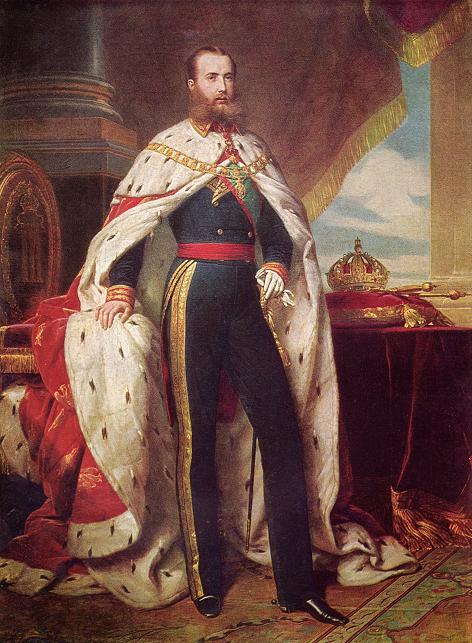
The second day after Maximilian's capture, Col. SOBIESKI was in charge of him, for just that one day. Col. SOBIESKI said to him, "Your Majesty remembers, no doubt, when you were the viceroy of Italy, that you ordered the expulsion form all of your domain, of those political refugeees who had taken part in the demonstration of honor to Captain INGRAHAM, of the United States navy." He said, "Yes," without raising his head. I said, "Your Majesty, I was one of those refugees." Now for the first time he raised his eyes, and said: "That is impossible, that was many years ago, and you are a very young man." I said, "Yes, that was sixteen years ago, and I was but a very small boy, but your order included me." "Well, time rounds up all things," was the reply. Maximilian was executed on the 19th of June, 1867. Col. SOBIESKI was selected to command the reserve firing party. The following day he had an audience with President JUAREZ. He spent a couple months in Mexico City enjoying all the privileges of a hero, but soon decided that America was where he belonged and therefore it was time for him to return.
(There is much more about John's adventures in Mexico in his book.)
Returning to America
I must quote from Col. SOBIESKI's book here. "The ten years which I had served in the United States army, and the battles I had fought in the country's behalf, had so imbued me with the American spirit and national feeling, that I could never think of permanently locating anywhere except in the domain of "Uncle Sam."
"I would not return to my native land and permanently locate there, even though it might be free, and all of my ancestral rights restored to me. It is my earnest desire that the last time I shall open my eyes to behold the light of day, it may be to look upon the land of my adoption; and may all of my descendants ever abide under the stars and stripes, in the land of the free and the home of the brave."
Col. SOBIESKI arrived back in the United States in New York on the 1st of September, 1867. From there he went to Boston, then to Chicago and finally to Rochester, Minnesota, where he spent the winter and spring. He then went west. He did return to Minnesota, where he was involved in politics. In causes, such as temperance, the cause he was taught by his mother. He was living in Chicago in 1876. He was chairman of the Prohibition State Committee of Illinois.
The Lemen Family - Salem, Illinois
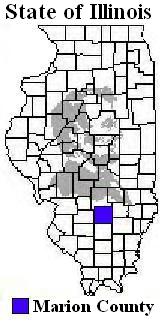 During Col. SOBIESKI's travels, speaking at places all over the country and the causes to which he adhered, he met the Rev. Benjamin F. LEMEN family of Salem, Marion County, Illinois. Rev. LEMEN had already died by the time he met the family, but Mrs. Mary Putnam (RAND) LEMEN (1811-1892) was still active in her causes and taking care of her children. Mrs. LEMEN was the grand-niece of General Israel PUTNAM of Revolutionary fame. She was a prominent educator in Illinois, having arrived there from New Hampshire. She was instrumental in forming two colleges in Illinois, one being the oldest college in Illinois today, McKendree College in Lebenon. The other was in 1827, Shurtleff College in Alton, Illinois, which has since been incorporated into Southern Illinois University-Edwardsville. She was one of the first women in this country to ever hold the position of professor at a college for men as well as women. She taught Greek, Latin and Hebrew. Later she founded the Young Ladies Seminary in Salem, Illinois. She was also one of William Jennings BRYAN's teachers. She was a very caring women and treated all people the same, regardless of color, education or background.
During Col. SOBIESKI's travels, speaking at places all over the country and the causes to which he adhered, he met the Rev. Benjamin F. LEMEN family of Salem, Marion County, Illinois. Rev. LEMEN had already died by the time he met the family, but Mrs. Mary Putnam (RAND) LEMEN (1811-1892) was still active in her causes and taking care of her children. Mrs. LEMEN was the grand-niece of General Israel PUTNAM of Revolutionary fame. She was a prominent educator in Illinois, having arrived there from New Hampshire. She was instrumental in forming two colleges in Illinois, one being the oldest college in Illinois today, McKendree College in Lebenon. The other was in 1827, Shurtleff College in Alton, Illinois, which has since been incorporated into Southern Illinois University-Edwardsville. She was one of the first women in this country to ever hold the position of professor at a college for men as well as women. She taught Greek, Latin and Hebrew. Later she founded the Young Ladies Seminary in Salem, Illinois. She was also one of William Jennings BRYAN's teachers. She was a very caring women and treated all people the same, regardless of color, education or background.
This Lemen family was instrumental in seeing that the State of Illinois came into the union as a free state. Rev. James LEMEN was the first protestant minister in the State of Illinois. He was a Baptist. He had six sons who were Baptist ministers, one of whom was Rev. Joseph Lemen, father of Rev. Benjamin F. LEMEN (1814-1875). The Lemen's worked continually for abolition of slavery throughout the United States. Rev. Benjamin LEMEN was traveling on a train in 1863 when he stepped into a passenger care and witnessed two southern men abusing and talking insultingly to some black ladies. Rev. LEMEN walked up to the men and commanded them to desist. They in turn shot him and then stabbed him in the back. He did live, but never totally recovered.
Rev. Benjamin LEMEN's son, Rev. Joseph Goff LEMEN (1848-1904), graduate of Harvard University was first a lawyer and then became a minister. He was the founder of the Christian Children's Home in Council Bluffs, Iowa. He had a son, H. R. LEMEN.
The oldest daughter of Rev. Benjamin LEMEN was Helen K. LEMEN (1843-1908), who married Colonel W. N. DENNY. He was a Colonel in the Civil War out of Indiana. Helen DENNY was a leader of the Temperance movement. She went all over the country, including the far west, lecturing for the cause with the Woman's Christian Temperance Union. She had one daughter, Mary Putnam DENNY.
One of Rev. Benjamin LEMEN's daughters was Lydia Gertrude LEMEN, who was born the 3rd of June, 1879, Salem, Illinois. She studied at her mother's Young Ladies' Seminary in Salem and then went to Almira College in Greenville, Illinois. There she graduated with the Class of 1876. It is this daughter who took the heart of Col. SOBIESKI, for only a child of such a family heritage could be as noble as the heritage from which Col. SOBIESKI came.
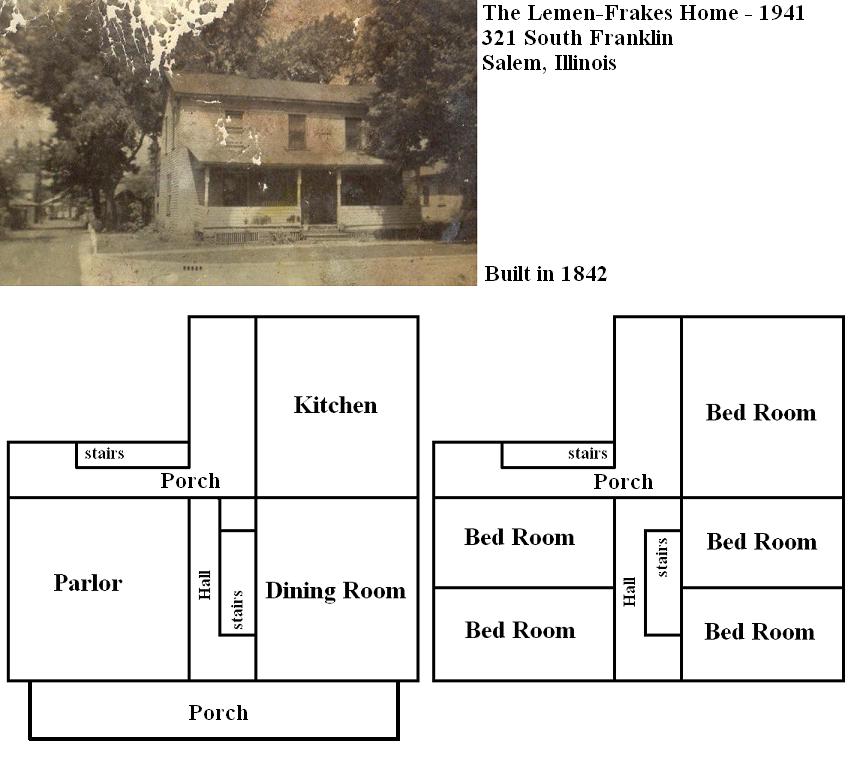
Colonel John SOBIESKI married Lydia Gertrude LEMEN the 3rd of June, 1879 at the Lemen Family home (LEMEN-FRAKES HOME, 321 South Franklin Avenue) in Salem, Marion County, Illinois. They made their home for a time there with Mrs. LEMEN. She was said to have had a beautiful voice.
There was one other girl in the family. She was adopted by Rev. and Mrs. Benjamin LEMEN. It was Anna LEMEN (1865-1942). She was actually the daughter of Judson and Mary (Eberline) LEMEN. Judson was Benjamin's brother. Anna married John C. WIBEL, Jr.
Sobieski Children
Col. and Mrs. Sobieski became the parents of a baby girl, Mary Putnam Sobieski, born the 2nd of September, 1880, Salem, Illinois. They then became the parents of a baby boy, John, on the 3rd of October, 1882. He died the 5th of April, 1895 while on a visit to his uncle's, Rev. J. G. LEMEN, in Council Bluff's Iowa. He was sick only a few days, dying from what they called "brain fever." What Col. SOBIESKI had to say about his son: "He was a beautiful boy, my pride and joy. His head was all covered with ten thousand clustering curls; he had large black eyes. The boy was in every way as beautiful as a poet's dream. He was a great student, and loved books. Before he was twelve years old he had the reputation in our little town of being the best posted in history of anyone in the town."
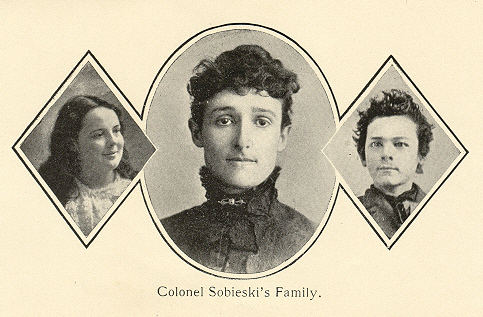
Temperance and Women's Suffrage
Col. SOBIESKI was the founder of two thousand and eighty-six lodges of Good Templars and had taken into the order ninety thousand members. The rest of his years were spent on speaking tours for the temperance movement. He also always worked for women's rights.
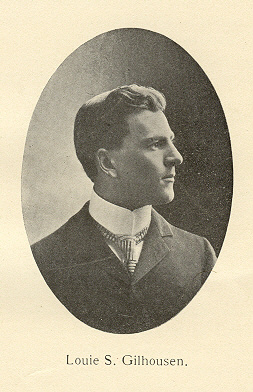
 In the spring of 1901, Col. and Mrs. SOBIESKI moved to California. They affiliated with the Temple Baptist Church. On the 18th of June, 1902, their daughter, Mary, married Louis Sprankles GILHOUSEN, the son of W. H. GILHOUSEN, a good friend of the SOBIESKI's. Louis GILHOUSEN was a banker in Los Angeles. The ceremony was performed by Rev. Dr. Willey PHILLIPS, editor of The California Voice. They honeymooned in Catalina and Mount Lowe and then returned to their new home which was located at 1107 Central Avenue in Los Angeles.
In the spring of 1901, Col. and Mrs. SOBIESKI moved to California. They affiliated with the Temple Baptist Church. On the 18th of June, 1902, their daughter, Mary, married Louis Sprankles GILHOUSEN, the son of W. H. GILHOUSEN, a good friend of the SOBIESKI's. Louis GILHOUSEN was a banker in Los Angeles. The ceremony was performed by Rev. Dr. Willey PHILLIPS, editor of The California Voice. They honeymooned in Catalina and Mount Lowe and then returned to their new home which was located at 1107 Central Avenue in Los Angeles.
On the 26th of October, 1906, Mary Sobieski GILHOUSEN gave birth to a baby boy in Los Angeles, California, who they named John Gilhousen SOBIESKI. Louis GILHOUSEN, having brothers and nephews to carry on the GILHOUSEN name, agreed to have his son bear the SOBIESKI name. From The California Voice, about the birth of little John:
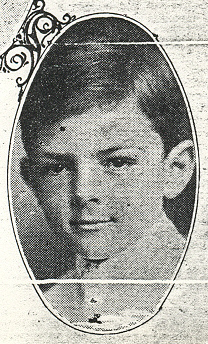 "A new born boy babe sleeps peacefully in Los Angeles unaware of the fact that some day it may be his duty to sit on the throne of Poland. The babe is the son of Mr. and Mrs. L. S. Gilhousen, 2807 Brighton Avenue, and was born at 6:30 Friday evening, October 26. The child is the grandson of Col. John Sobieski, descendent of King John III, and rightful king of Poland. Mrs. Gilhousen is the only living child of Col. Sobieski, who was driven from Poland after his father's death, his father and grandfather being executed at Warsaw for participating in the insurrection against the Russian government in 1846. Col. Sobieski enlisted in the army as a bugler and fought in most of the important battles of the civil war. Today he is one of the best known orators of the country. We feel particularly interested in this heir to the Polish throne. We have known these royal people for a number of years, and in all our life we have never seen a sweeter, more beautiful and lovable girl than Miss Mary Sobieski, the royal mother of this child. We had the honor of performing the marriage ceremony, uniting Mr. Gilhousen and Miss Mary Sobieski in the holy bonds of matrimony and now take peculiar pleasure in congratulating them in this, their day of supreme happiness."
"A new born boy babe sleeps peacefully in Los Angeles unaware of the fact that some day it may be his duty to sit on the throne of Poland. The babe is the son of Mr. and Mrs. L. S. Gilhousen, 2807 Brighton Avenue, and was born at 6:30 Friday evening, October 26. The child is the grandson of Col. John Sobieski, descendent of King John III, and rightful king of Poland. Mrs. Gilhousen is the only living child of Col. Sobieski, who was driven from Poland after his father's death, his father and grandfather being executed at Warsaw for participating in the insurrection against the Russian government in 1846. Col. Sobieski enlisted in the army as a bugler and fought in most of the important battles of the civil war. Today he is one of the best known orators of the country. We feel particularly interested in this heir to the Polish throne. We have known these royal people for a number of years, and in all our life we have never seen a sweeter, more beautiful and lovable girl than Miss Mary Sobieski, the royal mother of this child. We had the honor of performing the marriage ceremony, uniting Mr. Gilhousen and Miss Mary Sobieski in the holy bonds of matrimony and now take peculiar pleasure in congratulating them in this, their day of supreme happiness."
Throne In Poland to be Restored
During World War I, Czar Nicholas of Russia promised to restore Poland to its own people and restore the throne as well. From a St. Louis, Missouri newspaper, in which they gave a full story page to this, heading reading, "Former Candidate for Missouri Governor Has Best Title to Be King of Poland." The sub-heading read, "Russia's promise to restore partitioned nation revives pretensions of Col. John Sobieski, sixth in descent from Poland's national hero, King John Sobieski, But he declares American citizenship more precious than any Kingship in Europe..." The article also had photos of Col. SOBIESKI, Mrs. SOBIESKI, Mrs. GILHOUSEN and John Gilhousen SOBIESKI.
At the same time there was an article in the Salem, Illinois newspaper. Heading was, "Colonel John Sobieski." The sub-heading read, "A Former Salem Citizen is in Direct Line of Succession to the Throne of Poland." It is a long article, but the first paragraph reads, "Man of the older citizens of Salem will remember John Sobieski, who resided here for several years back in the 80's and during that time was married to Miss Gertrude Lemen of this city, whose mother, Mrs. Mary Lemen was for more than fifty years a teacher in the schools here. Sobieski was a lecturer by profession, his subject being chiefly on temperance. He and his family of wife, one daughter and a grandson now reside n Los Angeles, California."
His Work Ends
Colonel John SOBIESKI, heir to the throne of Poland, lived from 1901 until his death in Los Angeles, California. He died Friday, the 11th of November, 1927 at the home of his daughter, Mary GILHOUSEN.
The Royal Family Lives On
The Royal Family of Poland, the Sobieski's, remain alive and well in the United States of America. John Gilhousen SOBIESKI married Marylyn POWERS in 1931. They had met in high school. They had three children: John SOBIESKI, Lada SOBIESKI and James L. SOBIESKI. John Gilhousen SOBIESKI died 27 Jun 1987. He did serve in the United States Navy. From their three children, they have eleven grandchildren and at my correspondence with Marylyn SOBIESKI in 1988, she had one great-grandchild. Mrs. SOBIESKI lived in Pasadena and also had a home in Belvedere. She was a lovely lady. I will end this with the Eulogy for Mrs. SOBIESKI's husband, given by their son:
Eulogy
to
John Gilhousen Sobieski
October 26, 1906 - June 27, 1987
Delivered by
James L. Sobieski
During Funeral Services for John G. SOBIESKI at 2:00 p.m. on June 29, 1987
at
All Saints Episcopal Church
132 N. Euclid Street
Pasadena, California
On behalf of my mother, Marylyn, and on behalf of the rest of our family, including spouses, children, grandchildren and great granddaughter Sarah, who just spoke up in the back, I want to express our appreciation that you have joined us today.
While I know that all of you knew my father, I want to say a few words about him.
He believed that life should be celebrated; that life should be lived in as productive a manner as possible; that it is not productive to mourn; that you should be going forward and not living in the past.
He was an optimist; he did not believe in being gloomy and sad; he believed in humor and happiness; he was always joking, even at the end.
He believed that if your cause was right and you fought hard enough, you could win.
He believed success comes from determination, hard work and perseverance.
When he was told he had terminal cancer, he said he would fight it until he sank and then he would fight it from the water.
He was born on October 26, 1906 in Los Angeles, California. He graduated from Los Angeles High School in 1923, then worked a year to save money for college.
He entered Stanford University in 1924 and went out for the baseball team. He had been a non-varsity pitcher at Los Angeles High School and a varsity pitcher from Los Angeles High School who had preceded him to Stanford told the coach he wasn't a good pitcher. So when there weren't enough uniforms to go around, he didn't get one. He was known as the barefoot pitcher, although he had baseball shoes, but not a uniform initially. He worked on his pitching control, because he felt that was the key to being successful.
He never shrank from paddling against the current and did not let the lack of a uniform and no playing time discourage him. He worked constantly to improve his pitching control.
He sat in the bull-pen for several games. The Palo Alto newspaper sent a reporter who didn't know anything about baseball to cover an important league game. The coach told the reporter to sit with Sobieski, that Sobieski wouldn't be playing and so he could explain the action to the reporter. Needless to say, by the 7th inning Stanford had used all of its pitchers except Sobieski and one other pitcher. When the coach signaled the bull-pen for a pitcher, although the coach was signaling for the other pitcher, my father ran into the game. He was told later that the coach said, "Oh no, not Sobieski, I wanted the other pitcher". However, the coach decided to let him pitch. He got out of the inning without allowing any runs and finished the game without allowing any runs. In the meantime, Stanford rallied and won the game. The Palo Alto Times carried the headline, "Sobieski saves the day", produced by the reporter he had been explaining the action to.
From then on, he was a starting pitcher and he won a varsity letter every year pitching for the Stanford baseball team. Rosey Gilhousen, a scout for the Kansas City Royals who is here, told me this morning that my father pitched 5 no-hitters for Stanford, which is still the record for no-hitters. I didn't know about that before he told me this morning, but I do know that his highlights included a no-hitter against UCLA.
He was a member of the SAE fraternity, graduated with great distinction from Stanford in 1928 and from Stanford Law School in 1930. He attended Harvard Law School as a special student from 1928 to 1929. When he went on the train to Harvard, he couldn't afford to buy food on the train. He ate cheese he brought with him and bought tamales from venders at train stops.
He worked his way through both college and law school and also had scholarship assistance. He married my mother, Marylyn, in 1931, and they remained married for 56 years until he died from cancer at the age of 80 at 8:00 a.m. on Saturday morning, June 27, 1987. They had three children between 1933 and 1936; John, Lada and me. From 1934 to 1935, only 4 years out of law school, he served as Associate Counsel for the U.S. Senate Select Committee investigating Receiverships and Bankruptcies in Federal Courts. From 1936 to 1942, he served as a senior attorney with the United States Securities and Exchange Commission.
From 1942 to 1945 he served in the U.S. Navy.
He was patriotic and believed in serving his country. Even though he was 36 years old, which was well above the draft age, and had a wife and three children ranging from 6 to 9 years old, he volunteered to serve in the U.S. Navy the day after Pearl Harbor in 1941. During World War II, he served overseas for 30 months in Navy Air Combat Intelligence, rising to the rank of Lt. Commander. When the Korean War commenced in 1950, he was ordered to report to the Pentagon on 10 days notice to organize our Naval anti-submarine operations. He served in Navy Air Combat Intelligence from 1950 to 1951 as a Lt. Commander. (A comment on this paragraph from Marylyn?s letter: ?It was a happy thought, on our sons part, that John was recalled in the Korean War to ?organize our Naval anti-submarine operations? but that was not the case. He was recalled and served in the Pentagon for the duration, after having been notified that he was over age, over rank and was out of the Reserves. They can always call you if they need you and someone must have known what he was capable of doing. I am sure he performed valuable work, even if not as glorified as his son believed.?)
He always believed honesty was the best policy. During World War II, his interviews with returning Navy pilots indicated a trigger device on anti-submarine planes used in attacking submarines was malfunctioning. He wrote a report to headquarters in Washington, D.C. describing the malfunction. The Admiral commanding his area told him not to send the report, because the Admiral thought it reflected on the Navy Captain in charge of maintenance. My father insisted on sending the report anyway, and the resulting review, conducted by headquarters determined the design of the trigger device was faulty and it was redesigned.
He also felt all decisions should be based on a careful analysis of the facts. When he was in the Pentagon during the Korean War, he sent a memo challenging a Pentagon study of the Yugoslavian air force, which had concluded that Yugoslavia did not need American assistance. He noted the study did not consider the effect of constant usage and no replacement parts in calculating the combat readiness of the Yugoslavian air force. He recommended that the U.S. provide parts and other support to the Yugoslavian air force immediately. The course he recommended was followed.
In 1954 and in 1956 he was the Democratic nominee for Congress in the California 25th Congressional District. From January 1959 through December 1963 he was the Corporations Commissioner of the State of California.
He believed in democracy and equal opportunity. As a result, he was a strong supporter of cumulative voting in the election of directors, because he felt that the ability to elect directors should not be separated from the ownership of a company. When he became Corporations Commissioner, the California Department of Corporations did not have minority and female employees in important positions. He immediately changed that. He contacted persons he knew who he thought would know qualified candidates and asked them to send them in. Hirings and promotions based on merit and not extraneous matters such as sex or race became the rule.
When my sister, Lada, joined him in the practice of law, the concentration of his law practice shifted from corporation finance to representing women and minorities who had been discriminated against in their employment. Cases were taken which had merit, even if the client could not pay for the legal services rendered.
Throughout his life he has worked to improve the government. He.felt the government should protect the average person, the person who normally has neither the sophistication nor the financial resources to hire the lawyers and accountants needed for protection against fraudulent and other schemes.
As part of his effort to improve government, since 1970 he has lobbied actively against the high interest rate policy of the U.S. Federal Reserve. He has spoken on the subject at Town Hall, USC and at local democratic clubs, as well as carrying on voluminous correspondence with lawmakers in Washington, D.C. His letters, taking the Federal Reserve to task, have been published in the New York Times, the Los Angeles Times, the Wall Street Journal and other periodicals.
He was a strong believer in education as a key to opportunity. He contributed to the education of all of his grandchildren financially and personally tutored those who requested it. His tutoring was an important factor in the academic success of several of his grandchildren. Awards for original factual research by undergraduates in the Economics Department have been set up in his name at Stanford University.
He was frugal, particularly with respect to spending money on himself. He wore the same tennis shoes for 30 years (although they had many holes) and breakfasted on the Denny's Senior Slam (a special for senior citizens); but when he took his extended family to restaurants, there were no restrictions on what was ordered.
For some time before World War II, we raised our vegetables in our garden. One year, we had a huge crop of string beans. Be didn?t want to waste string beans or anything else, so we ate string beans for breakfast, lunch and dinner for several weeks. At breakfast, they were friend with bacon and bread crumbs and at lunch and dinner, they were cooked in other ways. When we went camping for two weeks, I remember thinking that we would escape the string beans. But he brought them along, and we continued to eat them for breakfast, lunch and dinner. When we returned from camping, we had finally eaten our way through the string beans. Our relief was short-lived, however. We visited his mother for dinner and as a special treat, not knowing what we had gone through for several weeks, she served string beans.
He loved music, classical music, joyful music. He loved to read. He was a prodigious reader.
Winston Churchill and history were favorites. He had a towering intellect and remembered everything he read. He was a strong believer in the family, in getting married and in having and raising children as part of marriage. In addition to three children, he is survived by 11 grandchildren and one great grandchild.
He was an active swimmer throughout his life, swimming a long distance in the Belvedere lagoon with his wife, Marylyn, daily during good weather. He continued his swimming until stopped by cancer in March of 1987.
He was always interested in helping others to have better lives. We are grateful for the time we had with him and we will now go forward without him.
Near the end of his life he said he'd like his tombstone to say, "I love you all".
1914 St. Louis Post Dispatch Sobieski Article
The Lemen Family
Salem, Illinois Yahoo Group
In the files section of the Salem Yahoo Group,
you will find the Lemen and Sobieski Genealogy.
Salem, Marion County, Illinois



Compiled by:
Stephen P.H. Frakes
Lemen-Frakes House
321 South Franklin Street
Salem, Illinois 62881-2120
stephenfrakes@yahoo.com
Additions and Corrections Greatly Appreciated


Updated:
27 September 2023


Copyright © 2003-2025 stephenfrakes All rights reserved.



 American Patriot
American Patriot

 Beginnings In Poland
Beginnings In Poland



 During Col. SOBIESKI's travels, speaking at places all over the country and the causes to which he adhered, he met the Rev. Benjamin F. LEMEN family of Salem, Marion County, Illinois. Rev. LEMEN had already died by the time he met the family, but Mrs. Mary Putnam (RAND) LEMEN (1811-1892) was still active in her causes and taking care of her children. Mrs. LEMEN was the grand-niece of General Israel PUTNAM of Revolutionary fame. She was a prominent educator in Illinois, having arrived there from New Hampshire. She was instrumental in forming two colleges in Illinois, one being the oldest college in Illinois today, McKendree College in Lebenon. The other was in 1827, Shurtleff College in Alton, Illinois, which has since been incorporated into Southern Illinois University-Edwardsville. She was one of the first women in this country to ever hold the position of professor at a college for men as well as women. She taught Greek, Latin and Hebrew. Later she founded the Young Ladies Seminary in Salem, Illinois. She was also one of William Jennings BRYAN's teachers. She was a very caring women and treated all people the same, regardless of color, education or background.
During Col. SOBIESKI's travels, speaking at places all over the country and the causes to which he adhered, he met the Rev. Benjamin F. LEMEN family of Salem, Marion County, Illinois. Rev. LEMEN had already died by the time he met the family, but Mrs. Mary Putnam (RAND) LEMEN (1811-1892) was still active in her causes and taking care of her children. Mrs. LEMEN was the grand-niece of General Israel PUTNAM of Revolutionary fame. She was a prominent educator in Illinois, having arrived there from New Hampshire. She was instrumental in forming two colleges in Illinois, one being the oldest college in Illinois today, McKendree College in Lebenon. The other was in 1827, Shurtleff College in Alton, Illinois, which has since been incorporated into Southern Illinois University-Edwardsville. She was one of the first women in this country to ever hold the position of professor at a college for men as well as women. She taught Greek, Latin and Hebrew. Later she founded the Young Ladies Seminary in Salem, Illinois. She was also one of William Jennings BRYAN's teachers. She was a very caring women and treated all people the same, regardless of color, education or background.



 In the spring of 1901, Col. and Mrs. SOBIESKI moved to California. They affiliated with the Temple Baptist Church. On the 18th of June, 1902, their daughter, Mary, married Louis Sprankles GILHOUSEN, the son of W. H. GILHOUSEN, a good friend of the SOBIESKI's. Louis GILHOUSEN was a banker in Los Angeles. The ceremony was performed by Rev. Dr. Willey PHILLIPS, editor of The California Voice. They honeymooned in Catalina and Mount Lowe and then returned to their new home which was located at 1107 Central Avenue in Los Angeles.
In the spring of 1901, Col. and Mrs. SOBIESKI moved to California. They affiliated with the Temple Baptist Church. On the 18th of June, 1902, their daughter, Mary, married Louis Sprankles GILHOUSEN, the son of W. H. GILHOUSEN, a good friend of the SOBIESKI's. Louis GILHOUSEN was a banker in Los Angeles. The ceremony was performed by Rev. Dr. Willey PHILLIPS, editor of The California Voice. They honeymooned in Catalina and Mount Lowe and then returned to their new home which was located at 1107 Central Avenue in Los Angeles.
 "A new born boy babe sleeps peacefully in Los Angeles unaware of the fact that some day it may be his duty to sit on the throne of Poland. The babe is the son of Mr. and Mrs. L. S. Gilhousen, 2807 Brighton Avenue, and was born at 6:30 Friday evening, October 26. The child is the grandson of Col. John Sobieski, descendent of King John III, and rightful king of Poland. Mrs. Gilhousen is the only living child of Col. Sobieski, who was driven from Poland after his father's death, his father and grandfather being executed at Warsaw for participating in the insurrection against the Russian government in 1846. Col. Sobieski enlisted in the army as a bugler and fought in most of the important battles of the civil war. Today he is one of the best known orators of the country. We feel particularly interested in this heir to the Polish throne. We have known these royal people for a number of years, and in all our life we have never seen a sweeter, more beautiful and lovable girl than Miss Mary Sobieski, the royal mother of this child. We had the honor of performing the marriage ceremony, uniting Mr. Gilhousen and Miss Mary Sobieski in the holy bonds of matrimony and now take peculiar pleasure in congratulating them in this, their day of supreme happiness."
"A new born boy babe sleeps peacefully in Los Angeles unaware of the fact that some day it may be his duty to sit on the throne of Poland. The babe is the son of Mr. and Mrs. L. S. Gilhousen, 2807 Brighton Avenue, and was born at 6:30 Friday evening, October 26. The child is the grandson of Col. John Sobieski, descendent of King John III, and rightful king of Poland. Mrs. Gilhousen is the only living child of Col. Sobieski, who was driven from Poland after his father's death, his father and grandfather being executed at Warsaw for participating in the insurrection against the Russian government in 1846. Col. Sobieski enlisted in the army as a bugler and fought in most of the important battles of the civil war. Today he is one of the best known orators of the country. We feel particularly interested in this heir to the Polish throne. We have known these royal people for a number of years, and in all our life we have never seen a sweeter, more beautiful and lovable girl than Miss Mary Sobieski, the royal mother of this child. We had the honor of performing the marriage ceremony, uniting Mr. Gilhousen and Miss Mary Sobieski in the holy bonds of matrimony and now take peculiar pleasure in congratulating them in this, their day of supreme happiness."
